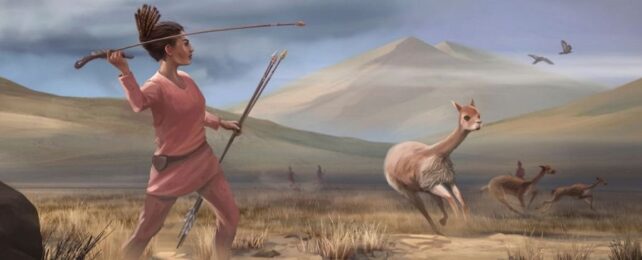The enduring idea that men evolved to hunt and women evolved to gather is a relatively baseless assumption that is facing greater academic resistance than ever before.
A new review of archaeological evidence and human physiology strongly suggests that modern gender roles have colored our reconstructions of the distant past.
According to biological anthropologists Sarah Lacy from the University of Delaware and Cara Ocobock from the University of Notre Dame, women are "well-suited to endurance activities like hunting", and there is little evidence to support their absence from prehistoric hunts.
Together, Lacy and Ocobock challenge the influential 'Man the Hunter' theory, which was first put forward in the 1960s by male anthropologists, who considered their own sex intellectually and physically superior.
"There were women who were publishing about this in the '70s, '80s, and '90s, but their work kept getting relegated to, 'Oh, that's a feminist critique or a feminist approach'," says Lacy.
"We wanted to both lift back up the arguments that they had already made and add to it all the new stuff."
Analyzing data on the Paleolithic, a period that covers human history up until the advent of farming, Lacy and Ocobock argue that there is little to suggest a sexual division of labor during Paleolithic times.
The lines of evidence originally used to support men as hunters, like tool-making, flint-knapping, or spear-throwing, could all just as easily have been carried out by the hands of women, they say.
What's more, male and female skeletons of the past are both buried with weapons and big-game hunting paraphernalia, indicating a lack of a social hierarchy based on sex.
These human remains also host similar trauma patterns, and while male bodies show clearer signs of repeated throwing, this doesn't exclude females from other hunting techniques.
Even in the modern day, there is ample evidence to suggest that hunter-gatherer tribes often share hunting roles between the sexes.
Earlier this year, for instance, a study found close to 80 percent of hunter-gatherer societies from the past century show evidence of female hunting. What's more, among societies where game is the biggest source of food, women participated in hunting 100 percent of the time.
Instead of staying back at camp to look after children, mothers in these societies often brought their kids along when hunting or fishing.
The Agta females of the Philippines, for instance, have unique strategies and weapons of choice for killing animals, which differ significantly to male hunting techniques.
Even still, both sexes spend equal time tracking down or killing prey, and females often did so while menstruating or carrying nursing infants.
The idea that female bodies are ill-equipped for or incapable of hunting is particularly spurious.
In a supporting paper focused on human physiology, Lacy and Ocobock argue that "females are woefully underrepresented in exercise physiology and sports medicine studies."
In fact, a recent study found only 34 percent of study participants in sport and exercise research were female.
What's more, only 3 percent of studies on human athletic performance consider females on their own.
The authors are not denying that there are real biological differences between males and females, but they argue that these differences are too often ignored, understudied, or misinterpreted to align with modern stereotypes.
Female bodies, for instance, tend to be better suited for extreme endurance activities, which is a key skill needed for hunting large game. Even though, on average, females are less quick and powerful than males that doesn't mean their physical contributions are useless.
Hunter-gatherer societies in Paleolithic times were small and likely female-dominated, which means its members probably had to be flexible with their labor roles. No pair of hands could go to waste.
"The gender-role assumptions of researchers whose worldviews rest within recent Western patriarchy should not be accepted as the default social organization for peoples living 100,000 years ago or more," argue Lacy and Ocobock.
"All sexes contributed equally to life in the past, and research going forward should assume this as the default."
The two papers were both published in American Anthropologist.
